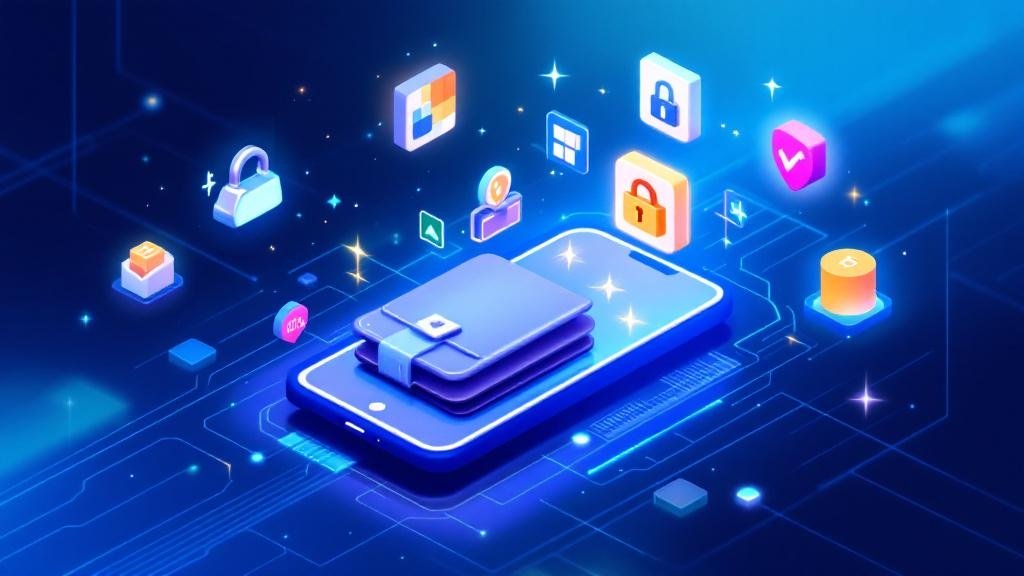Discover how blockchain and mobile banking are reshaping local deals and regional offers. Learn about blockchain security, mobile payments, and the integration of blockchain technology in mobile banking apps.
Introduction: The Fusion of Blockchain and Mobile Banking
In the past decade, mobile banking has transformed the way people manage their finances. Now, with the integration of blockchain technology in banking, mobile apps are becoming more secure, efficient, and reliable. Blockchain technology has already been revolutionizing the digital payments space and is now making its way into mobile banking apps to offer users not only secure transactions but also local deals and regional offers to help them save money.
This shift in the way banking works—powered by blockchain-powered mobile payments—promises better mobile banking security protocols and more personalized banking experiences. As we delve deeper into this topic, we’ll explore how blockchain adoption in mobile banking is helping users save with local deals, the benefits of blockchain for mobile payments, and how the future of mobile wallet with blockchain technology could look.
What Is Blockchain Technology in Banking?
Blockchain, at its core, is a decentralized digital ledger that records transactions across multiple computers. In banking, this means that each transaction is verified by the network, ensuring transparency, security, and accuracy. When applied to mobile banking, blockchain technology in banking brings several distinct advantages:
Transparency and Trust: Blockchain eliminates the need for a central authority. This results in transparent processes, where users can trust that their transactions are secure.
Security: Blockchain security in mobile banking is a significant benefit. Transactions on a blockchain are encrypted, making it nearly impossible to alter the data once recorded.
Faster Transactions: Thanks to distributed ledger technology (DLT), blockchain can speed up the payment process, reducing the time it takes for funds to be transferred.
Cost-Effectiveness: Traditional banking often comes with fees, especially for international payments. Blockchain minimizes or eliminates these fees by cutting out intermediaries.
With these advantages, it’s no surprise that blockchain adoption in mobile banking is on the rise, particularly in the realm of mobile banking solutions powered by blockchain.
How Blockchain and Mobile Banking are Changing the Way We Save
One of the more exciting aspects of blockchain and mobile banking is the potential for users to access regional offers and save money through their mobile apps. Here’s how blockchain can help you save with local deals:
1. Blockchain for Local Offers and Deals
Imagine this scenario: you’re browsing through your mobile banking app, and instead of just looking at your balance or transferring funds, you’re also seeing localized promotions and discounts—powered by blockchain. Here’s how it works:
Smart Contracts: With blockchain-powered mobile payments, smart contracts are used to automatically unlock deals or discounts once certain conditions are met. For example, if you make a purchase at a participating local store, the smart contract could instantly apply a discount without the need for manual verification.
Loyalty Programs: Blockchain can help banks and financial institutions create better mobile banking apps with blockchain integration for loyalty programs. Your purchase history and spending habits, recorded on a secure blockchain, can be used to offer customized regional deals that are relevant to you.
Regional Deals from Merchants: Local merchants can also benefit from blockchain and mobile banking integration by offering region-specific discounts to customers who use blockchain-based payment systems. These deals could be unlocked using a mobile wallet with blockchain technology, giving users the ability to save money directly through their banking apps.
2. Enhanced Security for Digital Transactions
The rise of blockchain in financial technology brings another key benefit: enhanced security. When you’re looking to access local deals through your mobile banking app, you want to be sure your data and transactions are protected. Blockchain provides:
Immutable Data Records: Each transaction or deal is permanently recorded, and once validated, it cannot be altered, making it a secure way to track your spending for future discounts.
Secure Payments: Blockchain encryption ensures that payment details are protected from fraud and hacking, which is a growing concern in digital payments.
How Blockchain is Powering Mobile Payments
While local deals are one aspect of the mobile banking and blockchain integration for transactions, another significant use case is blockchain-powered mobile payments. These payments offer users a seamless, fast, and secure way to send and receive money. Here’s how blockchain is improving mobile banking with blockchain for payment solutions:
1. Faster Cross-Border Transactions
One of the most significant challenges with traditional banking systems is the time it takes to process international payments. Blockchain helps resolve this by eliminating intermediaries and enabling near-instantaneous cross-border transactions.
For example, using blockchain for digital payments, money can be transferred directly from one person to another without needing to go through banks or other financial intermediaries, resulting in lower fees and faster transaction times.
2. Lower Transaction Fees
Because blockchain removes middlemen, there’s a direct impact on transaction fees. With traditional systems, banks charge fees for everything from ATM withdrawals to money transfers, but blockchain-powered mobile payments can dramatically reduce or even eliminate these fees, making it a more affordable option for users.
3. Increased Fraud Prevention
Fraud is a major concern in financial services, especially when it comes to digital payments. Blockchain’s distributed ledger technology (DLT) ensures that all transactions are verified and recorded on a decentralized network, making it much harder for fraudulent activities to take place.
The Future of Blockchain in Mobile Banking
The potential for blockchain in mobile banking is vast. As more banks and financial institutions adopt blockchain technology, the scope for blockchain applications in financial services will only grow. Let’s look at some possible developments:
1. Integration with Cryptocurrency
With the rise of mobile banking and cryptocurrency, many banks are looking at ways to integrate cryptocurrency transactions into their mobile banking apps. Blockchain can act as a bridge between traditional fiat currencies and digital currencies, making it easier for users to exchange and store their cryptocurrencies.
2. Blockchain and AI for Personalized Banking
The future of mobile banking solutions powered by blockchain will likely include artificial intelligence (AI) and machine learning (ML). These technologies can work together to analyze user data and provide personalized offers, deals, and financial advice—all secured by blockchain.








Comments (0)